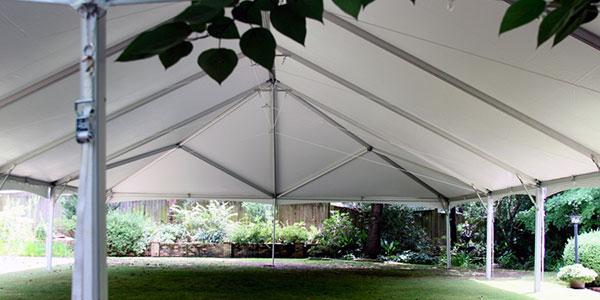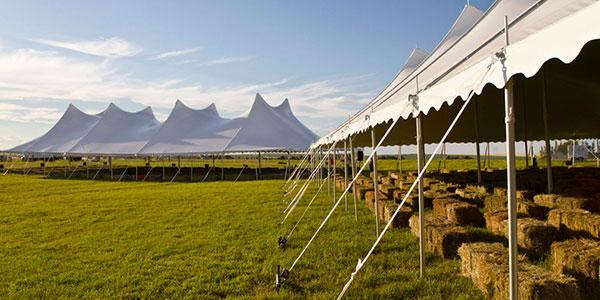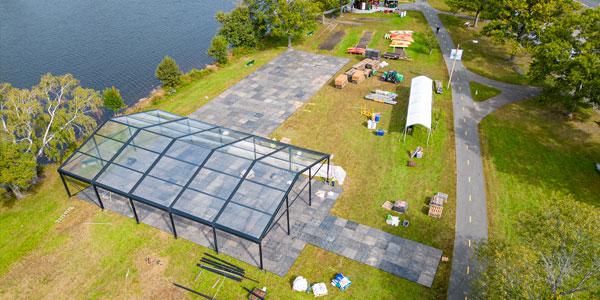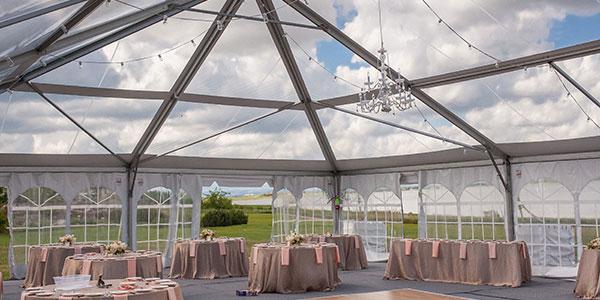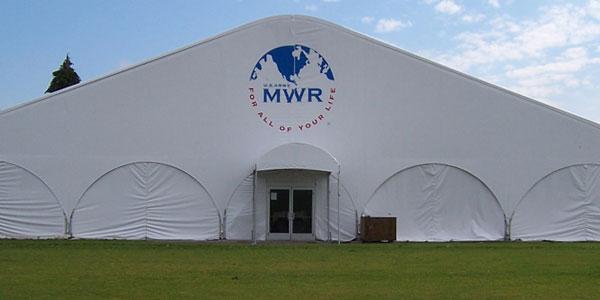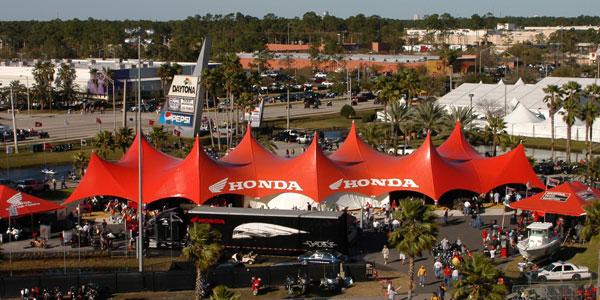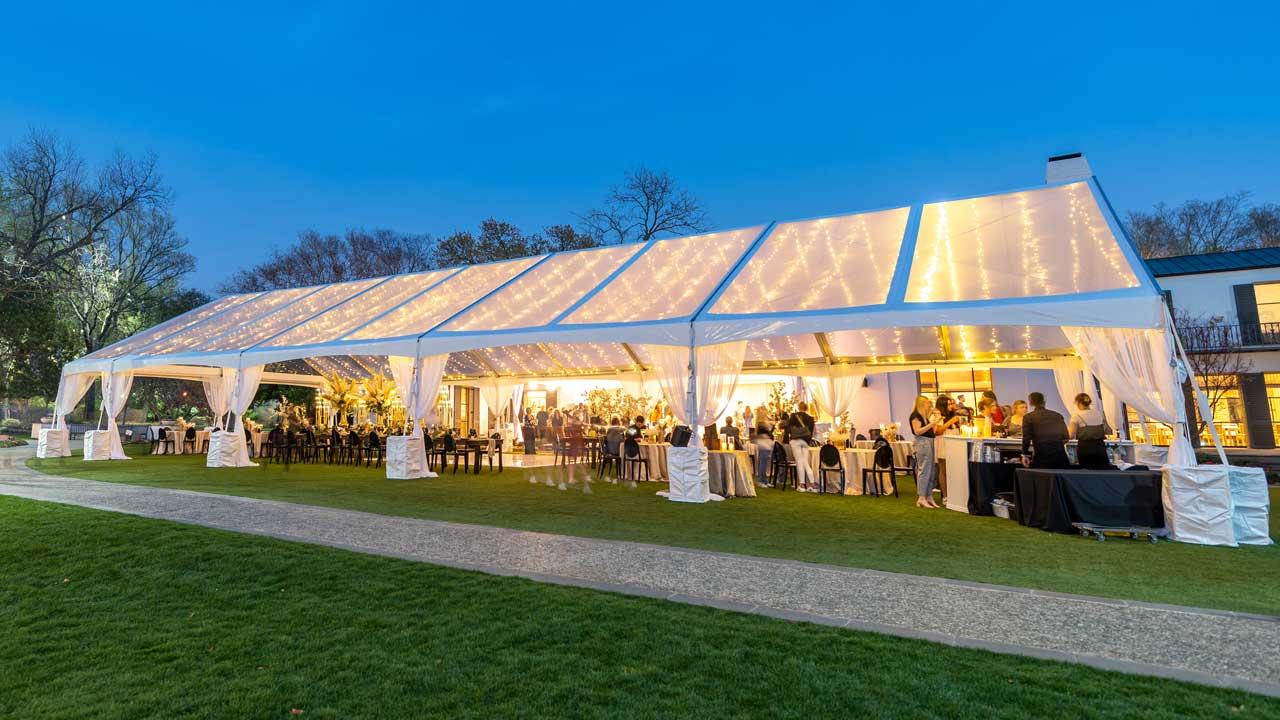
Ballasting: Understanding the principles
BALLASTING: UNDERSTANDING THE PRINCIPLES
Ballasting tents is one of the most frequently misunderstood yet critically important aspects of safe tent installation in the event and rental industry. This resource outlines the key factors that influence proper tent ballasting and provides a foundational understanding of why standardized weight recommendations cannot be applied across all installations.
The Importance of Proper Ballasting
Improperly secured tents can pose serious safety risks to guests, staff, and property. Despite widespread awareness, inadequate practices—such as using 55-gallon water barrels as ballast—remain common. These methods often fail to meet the required resistance against wind uplift and sheer (lateral) forces, particularly for commercial-grade tenting solutions.
Understanding the Variables
Determining the appropriate amount of ballast for any tent structure involves numerous variables that must be assessed by a qualified structural engineer. Ballast requirements are not universal and depend heavily on site-specific conditions and installation methods. Key considerations include:
-
Tent Size and Style – Larger and taller structures demand greater stabilizing forces.
-
Wind Load Requirements – Vary by geographic location, exposure, and applicable local codes.
-
Ballast Placement – Whether weights are attached directly to the leg or via guy lines from higher points on the structure, how far the ballast is from the base of the leg, and where the attachment point on the ballast is.
-
Connection Methods – Use of ratchets, rope, carabiners, or other hardware affects load distribution and break strength.
-
Surface Conditions – Asphalt, concrete, turf, or other substrates influence how ballast resists movement. Weather conditions may also impact how ballast resists movement. Friction modifiers may or may not be needed.
-
Jurisdictional Codes – Local building departments may require engineered documentation demonstrating compliance with code-specific wind loads and safety factors.
Only a licensed engineer can evaluate these factors and provide stamped documentation for code-compliant installations.
Coefficient of Friction and Ballast Effectiveness
The coefficient of friction (COF) between the ballast and the surface the ballast is on plays a critical role in overall holding power. In simple terms, COF refers to how much resistance there is to sliding when two surfaces are in contact. A higher COF means more grip, while a lower COF means the object can slide more easily.
-
Water Barrels – Common but problematic. These barrels are typically made from smooth plastic, which has a naturally low COF when placed on hard surfaces like concrete or asphalt. As a result, even when filled with water, the barrels can slide or shift under wind load because there isn't enough surface resistance to hold them in place.
-
Concrete Blocks – These are denser, heavier, and have a rougher texture compared to plastic. When placed on common event surfaces such as asphalt or concrete, concrete blocks create a much higher COF due to their gritty, abrasive surface. This means they are significantly less likely to slide, making them a much more effective and reliable option for ballasting.
Even with equal weight, the effectiveness of a ballast is compromised when the COF is low. A smooth plastic barrel may move under stress, while a concrete block with higher friction stays in place. This highlights why simply adding more weight is not a guaranteed solution—how that weight interacts with the ground is equally important.
Additional Resources
American Rental Association (ARA) Tent Ballasting Charts- LINK
American Rental Association (ARA) Ballasting Tool- LINK
Advanced Textiles Association (ATA) Ballasting Tools- LINK
Advanced Textile Association (ATA) Ballasting Webinar- LINK
Summary
Safe tent installations require more than a simple lb/ft² solution. Effective ballasting demands a thoughtful, engineered approach that accounts for structure design, environmental conditions, and the physics of load resistance. Rental companies should engage engineering professionals when planning installations that require ballasting, particularly for public or permitted events.
For further information or to discuss tent engineering needs, contact Aztec Tents or consult the additional technical documents available at aztectent.com/resources/product

